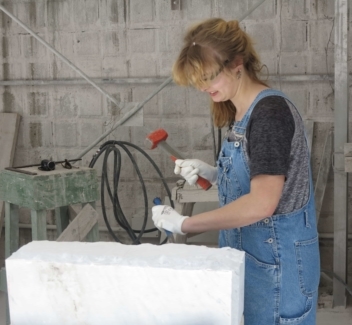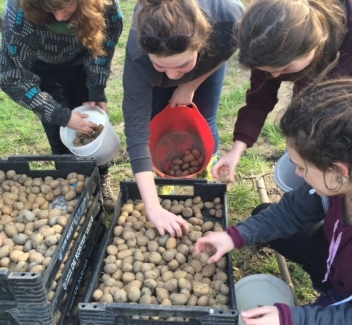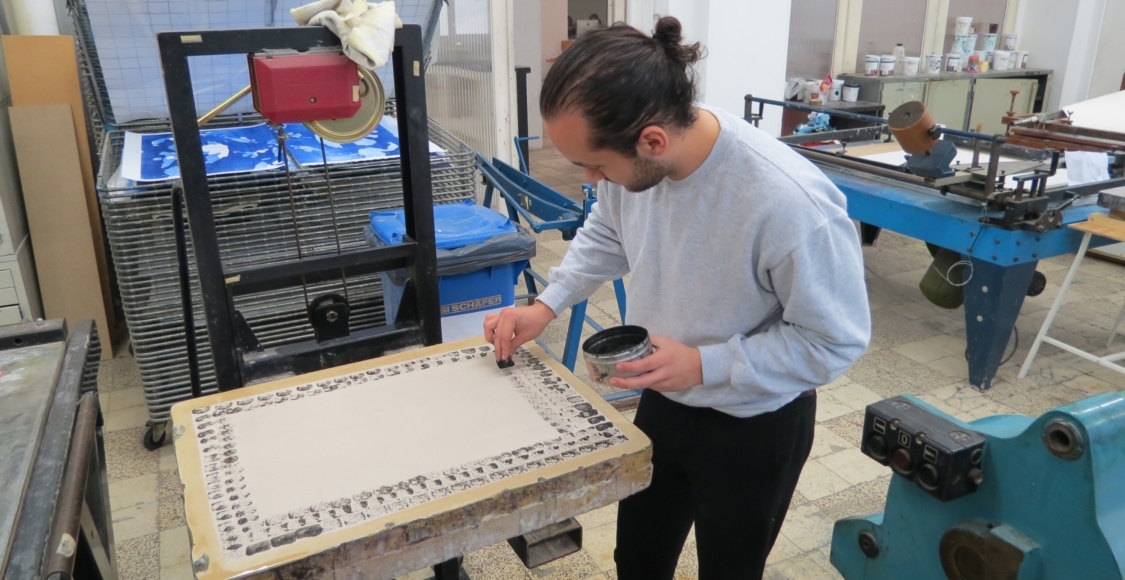
Studio art
Trajectory within the major Fine Arts
As an independent artist, you focus on developing your own artistic practice and a personal visual language. Maybe your work will be exhibited in a museum in a few years’ time or will be shown during a lecture on current developments in the art world…
Studio art
Contemporary and independent
Fine arts require a free spirit open to everything around them in the world. As an independent artist, a great responsibility awaits you. In future, your work will challenge the public to embark upon a dialogue.
During your time at the Studio art, you learn to relate to contemporary art and you become proficient in painting, sculpture, photography, graphics or new media. The focus is on looking, creating, thinking, reflecting and presenting. Your lecturer-experts will guide you through this. One on one. This is, in a way, the common thread running through this programme.
You work in a collective studio with well-equipped workshops at a campus, where you can develop yourself to your full potential. With a view to your future career, you learn to present your work to the outside world.
Indeed, you will find your predecessors in museums and galleries all over the world. And at the bottom of this page. Will you follow in their footsteps?

Academic bachelor’s programme
In the academic bachelor’s programme, we pay a lot of attention to conceptual thinking, process-based work and documentation. This study programme also offers a general basic programme where you build up theoretical knowledge and focus strongly on reflection and critical thinking. After this three-year academic bachelor’s programme, you reach the level required to start an artistic master’s programme.
1 Studio, 5 workshops
In this Studio you learn to relate to contemporary art and choose one of the 5 workshops: painting, spatial, media art, graphics or project. Your chosen workshop is not an island in itself, but is constantly connected to the other workshops. Every week all workshops come together in the umbrella platform. The focus is on looking, making, thinking, reflecting and showing. Your teacher experts will guide you in this. One on one. That is somewhat the common thread in Studio art.
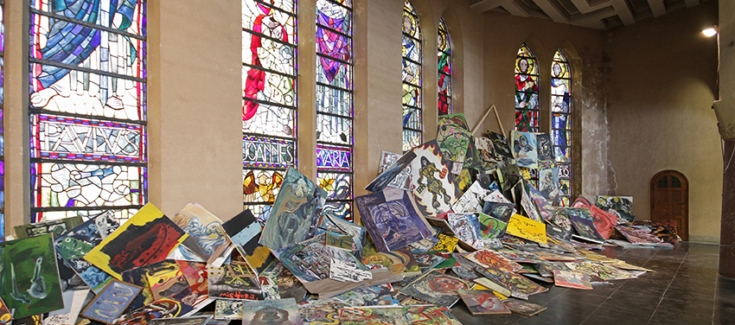
Painting workshop
In the first year we mainly focus on mastery of the medium. What do you observe, how do you observe painting? You learn to handle paint and develop your own pictoriality. Which source material is most suitable for your work, and we discuss the interpretation and translation into a painterly image. We take a close look at painting genres such as still life, portrait and figure in practice. At the same time, they form the basis for conceptual and critical questions that you will develop during this first year. Finally, we pay attention to possible ways of showing and how an image can function in different ways in space.
During the second and third year, your individual work becomes even more important and your universe gradually becomes more visible.
The collective dynamics throughout the various bachelor years are inspiring and the new architecture and infrastructure of Campus Sint Lucas Antwerpen creates an open working atmosphere that leads to interactions between the different disciplines. The medium of painting is an impetus to develop into an artist, but never an end in itself and can be used in the broadest sense.
In short, in this workshop you will be challenged to develop a personal and critical vision in relation to art history and contemporary art.

Graphics workshop
What is the significance of the printed image in the complex world in which we live daily? In the graphics workshop you will investigate the visual and expressive potential of this fascinating medium in a dynamic way. We introduce you to a range of traditional and contemporary printing techniques and also pay great attention to an environmentally friendly and safe way of working through the use of non-toxic materials.
In the first year we mainly focus on mastery of the medium. What is gravure, lithography, relief printing, screen printing and digital media? We also encourage combined applications and connections with other disciplines.
From the second year you will concentrate on developing your own course, under the guidance of the teachers. Your own practice and also group projects will form the basis for the development of conceptual and critical questions.
Graphics is a unique discipline that offers many possibilities due to its flexibility and reproducibility. Thanks to an active program, you often work together with other artists or partner institutions and you develop a personal and critical view of graphics.

Spatial workshop
The three-dimensional image as an artistic expression in a space, that is what we reflect on in the spatial workshop. Although three-dimensionality is not a medium in itself, we create three-dimensional images through the use of different media, ranging from installations to performances and sculptures.
During the bachelor’s program, we support you on the one hand in the technical aspect of three-dimensional images (modeling, carving, welding, …) and on the other, we give you insight into materials, shapes and structures. This is crucial to be able to shape the three-dimensional image and to give it a personal dimension.
In the spatial workshop, you embark on an artistic research process, with an emphasis on reflection associated with making the spatial work. Moreover, in this way you develop an autonomous and authentic vision.
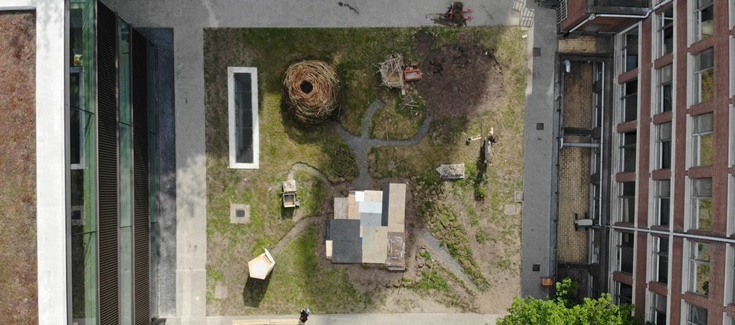
Project workshop
In the project workshop we actively work on developing a personal visual language and frame of reference. This is done through presentation moments and workshops, both inside and outside the walls of the workshop. The research into the relationship between the work and its environment is central to this.
You experiment with various media and exhibition formats such as publications, digital image channels, performances and site-specific and time-based interventions, and create work and context in an adventurous way. “How do you position yourself within a broader ‘socio-cultural’ field?”
You also develop the ability to critically relate to your artistic work and that of others, thanks to individual and collective discussions and show moments. During this image research, we actively encourage experiment and own initiative.

Photo-video workshop
In the photo-video workshop you make use of audiovisual media such as photo, video, audio and new technologies. You embark on an artistic quest in which you use both analog and digital media and research internet art. You create a new artistic visual language and develop your own artistic practice in a contemporary art context. You learn to use camera (photo-video) and recorder (sound) as a sketch instrument. How you perceive, archive and select an image or sound fragment plays a prominent role. A digital printroom with large format printers and scanners, a top equipped spacious photo studio and an analog dark room allow you to experiment to your heart’s content.
We pay a lot of attention to presentation and the exhibition format, and research into your position within the artistic field is also very important.
Thanks to individual coaching, group discussions, regular show moments and feedback, you learn to enter into dialogue with an art historical and social context. You reflect on your own work through exhibition visits and specific lectures within your field of study.
Medium-specific skills
Painting
No matter how contemporary your paintings are, your command over your techniques is that of an Old Master.
Printing techniques
Relief, intaglio or screen printing: you create wonderfully unrestrained graphic works.
Spatial thinking
… and doing. From performance to sculpture or installations. You learn how to use your three dimensions.
Experimenting with multimedia
You learn the basics of photography, video, audio and other contemporary media. To then go on to do your own crazy things with all of this.
Exhibit your works
In a gallery, for your fellow students or the general public. Know and claim your place.
Think and work independently
It is extremely important to be able to view your own work critically and talk about it. After all, there are no bosses or briefings involved.
Overarching courses
Manual and technological skills
This course unit consists of a package of initiations that help you at the start of your programme. For example, there are initiations in the field of software and in the workshops. In addition, you also follow a number of interesting studio-specific initiations.
Theory
Part of the theory is the same for all bachelor’s programme years. Philosophy, art anthropology, literature, art history, semiotic studies, culture and media theory, art design and context and art news.
Drawing
As part of the basic curriculum in the first and second year, each student works on developing basic competencies for drawing the human body and its surroundings and for visual analysis. In the second and third years, your drawing comes closer and closer, via elective modules, to the artistic practice you are developing in your studio. Over the three years, drawing becomes an authentic, autonomous and communicative medium for you. It becomes an essential tool for concept, creation and communication that broadens and clarifies your visual language.
Elective programme
The elective programme consists of two parts. Firstly, you participate in a project week every year. Here, you are part of a mixed group of students from different studios from the first, second and third years. In this way, you are confronted with students from different backgrounds and get the chance to develop a network comprising both students and lecturers. Secondly, in the second and third bachelor’s years, you gain more insight into art and culture by choosing from a series of elective courses and elective projects based on the research projects of theory lecturers.
Theory versus practice
The weightage of the courses evolves throughout the three bachelor’s years. Below you will find a visual representation of the courses you will follow in relation to your credits.
- Pratice
- Drawing
- Theory
- Elective programme
First year
Second year
Third year
In the theory lectures
Theory and reflection are an important part of our academic programme. Important as in: this part accounts for one third of the credits. The basic curriculum, for example, contains subjects such as philosophy, semiotics and art history. These are all courses that give you greater insight into art, culture and society. And they provide you with further inspiration and an interesting background for your own work.
In the studio
The theory even seeps through into the studio. In the form of theoretical seminars or as feedback from lecturers teaching theory and practice. Because the latter also have their place in the Studio.
In your chosen electives
The elective programme also contains a range of learning projects based on the research projects of theory lecturers. In this way, you complete the theoretical knowledge you receive with accents based on your own interests.
What does the future look like after the Studio art?
A study programme does what it promises: it enables to study a specific domain during which one acquires specific skills and a certain way of thinking. Our students choose their final destination themselves. Discover where they ended up…
An academic year, from one summer holiday to the next
At Sint Lucas Antwerpen, creativity is a constant. ‘Regular’ lecture weeks alternate with studio or project weeks and exhibitions. And exams, of course. This is what a typical year at Sint Lucas Antwerpen looks like:
- Theory
- Practice only
- Jury
- Holidays
- Exhibition
- Lectures
Who teaches at Studio art?
They always have one foot in the professional world and they enjoy sharing all that experience with their students. These qualified professionals will soon be your lecturers.

Céline Butaye

Sarah Westphal

Laurent Dupont

Sarah Smolders

Jivan van der Ende

Anne Daems
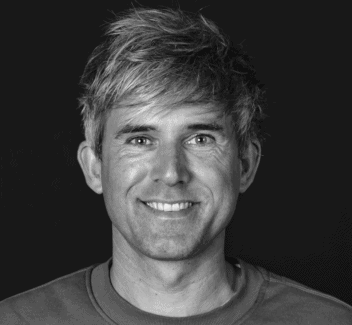
Manu Van Hove

Patrick De Vlieger

Jonathan Paepens
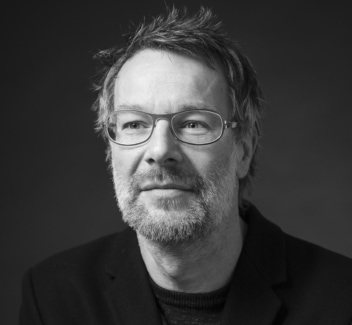
Marc Nagtzaam

Tim Verherstraeten

Koen Theys

Johan Luyckx

Hans Wuyts

Lien Hüwels

Xander Faes

Ellen De Meutter
One-semester art exchange programmes
Are you excited to study abroad during one semester?


